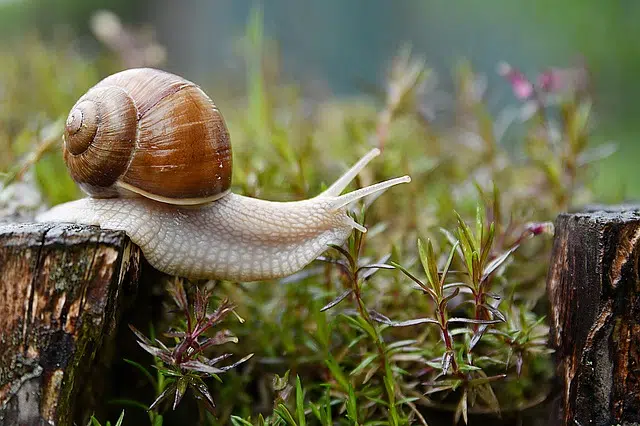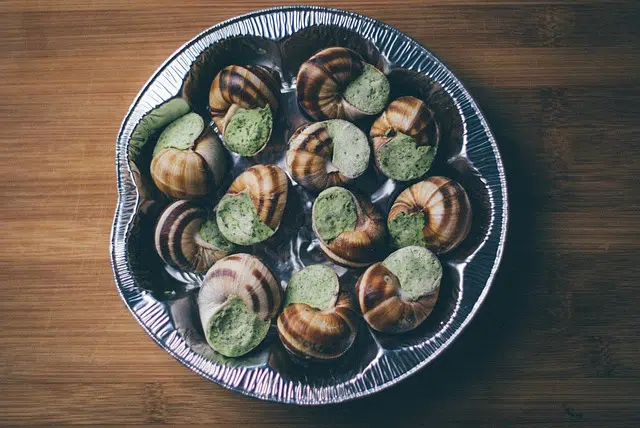
The snail is a mollusk.
The etymological origin of the term snail is not clear, according to what is indicated by the Royal Spanish Academy ( RAE ) in its dictionary. The concept refers to the shelled mollusk that makes up the group of gastropods .
There are terrestrial snails and others that are aquatic. Several species are considered edible , which is why they are part of the diet of human beings .
What is a snail
In the broadest sense, the snail is an invertebrate animal (it does not have a backbone ). As we already indicated above, it belongs to the phylum of mollusks since it has bilateral symmetry , its body in adulthood is not segmented and it has integuments that are not hard.
The body of snails is protected by a shell: a solid covering whose main component is calcium carbonate. In this way, snails are also testaceous .
As for the classification of gastropod , it refers to the fact that it has a fleshy foot that allows it to crawl and a head with a mouth and tentacles. The shell of gastropods is also made up of a single piece and usually develops in a spiral shape.
Displacement form
A well-known characteristic of the snail is the low speed it manages to reach when walking. To move, it combines elongation and contraction of the body; These muscle contractions generate the undulations that reach the foot.
To promote locomotion, the snail produces mucus that, thanks to its oiliness, minimizes friction . The substance also protects the specimens from the actions of insects, fungi and bacteria.

Snails are a valued food in French cuisine.
aquatic snails
There are thousands of species of aquatic snails . Most of them are saltwater (that is, marine ), although there are also some freshwater ( freshwater ).
Aquatic snails have an operculum that allows them to open and close the shell and they have gills inside the cavity of their mantle. Depending on their characteristics, these snails are classified as conids , strombids or haliotids , to name a few possibilities.
terrestrial species
Among land snails we find species such as Helix aspersa , Helix Lucorum and Helix pomatia . The first of them is referred to colloquially as the common land snail or garden snail .
The common land snail is hermaphrodite and has nocturnal and crepuscular habits. When the drier season arrives, it can lock itself in its shell, creating a blockage with its mucus.
It is interesting to mention that the common land snail is considered a pest because it feeds on crops. At the same time, they are animals highly valued in French gastronomy and other regions, being raised for this purpose in a practice known as helicculture .
The snail as food
It is estimated that humans already ate snails in the Bronze Age . In the Roman Empire , meanwhile, breeding would have begun in specific spaces.
Snails can be cooked in different ways. The recipe that consists of boiling them and serving them in their own shell, accompanied by lard (butter), garlic and parsley, is popular. They are also usually consumed in soup .
Other uses of the term
Caracol is also the name given to the various turns of a road . That is why the trails with a spiral design or layout are named this way: "To get to the hostel we had to cross a spiral path" , " The Camino de los Caracoles, in the Villavicencio Natural Reserve, offers spectacular landscapes" "If you want to explore the snails, you must have a lot of experience behind the wheel, otherwise the trip is very dangerous."
Another use of the concept refers to a piece that is part of certain mechanical watches . Shaped like a cone, the snail has a groove that allows the rope to coil.
